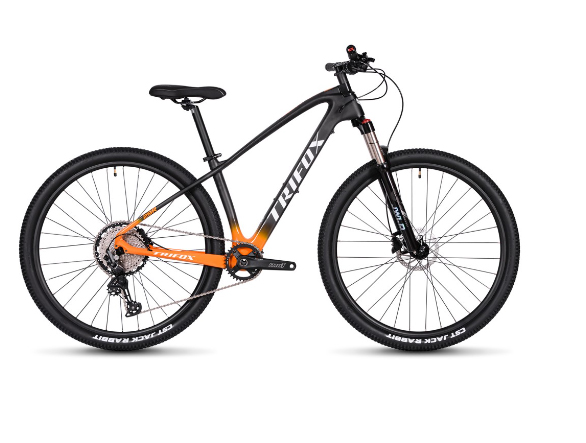
Choosing the perfect size M bike for your riding style is an essential step towards a comfortable, efficient, and enjoyable cycling experience. Whether you're a seasoned rider or new to the biking world, understanding how to select the right bike size can greatly enhance your performance and overall enjoyment of the ride. Understand Your Riding Style The first step in choosing the perfect bike size is to clearly define your riding style. Are you into road biking, mountain biking, or hybrid cycling? Each style demands specific bike features and sizes for optimal performance. Road bikes, for instance, often require a snugger fit for aerodynamics and speed, while mountain bikes offer a bit more room for maneuverability on rough terrains. Know the Size Chart Bike sizes are typically categorized by frame size, which is measured in centimeters for road bikes and inches for mountain bikes. An M-size bike generally corresponds to a medium size, which is usually around 54-56 cm (21-22 inches) for road bikes and 17-18 inches for mountain bikes. However, these measurements can vary slightly between manufacturers, so it’s crucial to check the specific size chart provided by the bike brand. Measure Your Height and Inseam Your height and inseam length are pivotal measurements when determining the right bike size. To measure your height, stand against a wall without shoes and mark the top of your head to get an accurate measurement. For your inseam, stand with your back against the wall and a book between your legs—mimicking a bike seat—and measure from the top of the book to the floor. These measurements will help you find a bike frame that allows for proper leg extension and comfortable reach to the handlebars. Evaluate Bike Geometry Bike geometry plays a significant role in finding the right fit. It refers to the angles and lengths of different bike frame parts, including the top tube, seat tube, and head tube. A bike with a longer top tube may suit riders looking for a stretched-out position, typical of racing or long-distance road biking. On the other hand, bikes designed for agility and comfort, like many mountain and hybrid bikes, often have a shorter top tube to facilitate an upright riding posture. Consider Adjustments and Components Even within the same size, bikes can offer different levels of adjustability. Seat height, handlebar height, and reach can often be adjusted to fine-tune the fit. Additionally, the choice of components such as the saddle, pedals, and handlebars can affect your overall comfort and performance. For example, wider handlebars may offer more control for mountain biking, while narrower bars could be preferable for road cycling. Test Ride Different Bikes Nothing beats the insights gained from a test ride. Visit your local bike shop and try out several M-sized bikes within your preferred type. Pay attention to how each bike feels in terms of comfort, ease of pedaling, handling, and reach to the components. During the test ride, consider aspects like: Comfort: Are you able to ride without straining your neck, shoulders, or back? Control: Do you feel in command of the bike even when turning or going over bumps? Efficiency: Can you pedal smoothly and effectively without feeling cramped or overly stretched? Seek Professional Fitting If you're investing in a high-end bike or if you plan to spend significant time riding, consider getting a professional bike fitting. A bike fitting expert will take comprehensive measurements and adjust your bike to fit your body dimensions precisely. This service can greatly improve comfort, efficiency, and prevent injuries associated with poor bike fit. Final Thoughts Selecting the perfect size M bike is a blend of art and science, requiring consideration of various factors tailored to your body dimensions and riding preferences. By understanding your riding style, knowing the size charts, taking accurate measurements, evaluating bike geometry, considering component adjustments, test riding, and potentially seeking professional fitting, you'll be well on your way to enjoying countless miles of comfortable and rewarding cycling experiences. Remember, the right bike is not just about size; it's about the perfect synthesis of fit, form, and function to complement your unique riding style.

Achieving the perfect balance of comfort and control on your bike largely depends on one critical touchpoint: the handlebar grips. Whether you're navigating rugged trails, cruising city streets, or competing in a race, the right grips can significantly enhance your riding experience. Understand Grip Types: Handlebar grips come in various shapes, materials, and textures. Ergonomic grips are designed to conform to the shape of your hand, reducing pressure points and fatigue during long rides. Lock-on grips feature a clamp system that prevents them from twisting or slipping, offering reliable control in all conditions. Foam grips, meanwhile, are known for their light weight and exceptional vibration damping properties. Select the Right Material: Rubber grips are popular for their durability and range of textures, offering a secure grip in wet or dry conditions. Silicone grips are softer and absorb vibrations well but might wear out faster than rubber. For those seeking the ultimate in comfort and shock absorption, foam grips are an excellent choice, though they may not provide as much direct feedback as rubber or silicone. Consider Bar Ends: For riders looking for additional hand positions and leverage, especially on climbs, grips with integrated or add-on bar ends can offer a significant advantage. They allow you to change your grip position, reducing strain on your hands, wrists, and shoulders during long rides. Grip Texture and Thickness: The texture of your grips should match your usual riding conditions. Smoother grips may suffice for calm, road biking, while a more aggressive texture provides extra hold for off-road adventures. The thickness of the grips also plays into comfort, with thicker grips offering more cushioning but potentially feeling bulkier for riders with smaller hands. It's a personal preference, so consider testing a few options to find what works best for you. Installation Tips: When installing new grips, cleanliness is key. Ensure both the handlebar and inside of the grips are clean and dry. For slip-on grips, a bit of hairspray or alcohol inside the grip can help it slide on easier and then stick in place once dry. For lock-on grips, simply slide them onto the bar and tighten the clamp bolts evenly for a secure fit. Maintenance: Regularly check your grips for wear and tear, especially if you ride frequently or in harsh conditions. Worn-out grips can reduce your control over the bike and lead to discomfort or blisters. In Conclusion, upgrading to the best handlebar grips for your needs is a simple yet effective way to improve both comfort and control on your bike. By understanding the types of grips available, choosing the right material and features for your riding style, and ensuring a proper installation, you can enjoy a more comfortable, controlled, and enjoyable ride every time.
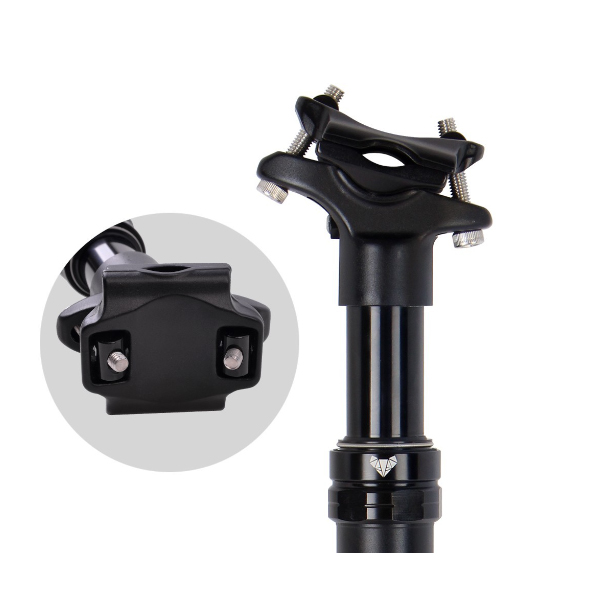
Upgrading your ride with the ideal bicycle seatpost can transform your biking experience, offering increased comfort, better bike fit, and enhanced performance. The seatpost is a crucial yet often overlooked component that connects your bike's frame to the saddle, playing a significant role in ride quality and efficiency. 1. Determine Your Needs: Start by assessing what you want from a seatpost upgrade. Are you seeking more comfort on long rides? Do you need a lighter post for racing? Or perhaps adjustability on the fly with a dropper post for mountain biking? Identifying your needs will guide your selection process. 2. Select the Right Diameter and Length: Seatposts come in various diameters and lengths. It's vital to choose one that matches your bike’s specifications. The diameter must fit your frame's seat tube precisely, so use calipers to measure the current seatpost or consult your bike's manual for specifications. Length is important if you find yourself needing more height than your current post can provide or if you're tall and need extra extension. 3. Material Matters: Seatposts are typically made from aluminum, carbon fiber, or titanium. Aluminum offers a good balance of strength, weight, and cost. Carbon fiber is lighter and can absorb road vibrations better, enhancing comfort but at a higher price. Titanium combines strength, lightness, and vibration damping but is the most expensive. Choose based on your balance of comfort, weight, and budget. 4. Consider the Setback: The setback of a seatpost refers to how far back the saddle sits relative to the post's insertion point into the frame. If you're looking to adjust your riding position for better leg extension or more aerodynamics, consider a seatpost with a different setback. A zero-setback post positions you more directly over the pedals, while a post with greater setback can help if you have long legs or prefer a more stretched-out position. 5. Explore Advanced Features: For mountain bikers and some road riders, a dropper post can be a game-changer. It allows you to adjust the saddle height without stopping, perfect for transitioning between climbs, flats, and descents. While heavier and more expensive, the on-the-fly adjustability can significantly improve control and confidence on varied terrain. 6. Installation: Installing your new seatpost is straightforward. Apply a thin layer of grease (or carbon assembly paste for carbon frames/posts) to the post before inserting it to prevent seizing. Adjust it to your desired height, ensuring it's at least past the minimum insertion mark, then tighten the clamp according to the manufacturer's specifications. In Conclusion, upgrading your bicycle seatpost is a smart way to enhance your riding experience. Whether it's improving comfort through shock absorption, adjusting your fit with the right length and setback, or adding the versatility of a dropper post, the ideal seatpost is out there. Remember to consider your needs, ensure compatibility with your bike, and balance factors like material, weight, and features against your budget for the best upgrade decision.
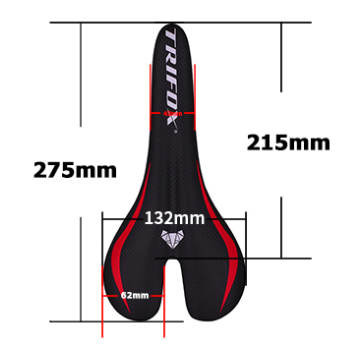
Finding the perfect mountain bike (MTB) saddle for long rides is essential to ensure comfort, performance, and endurance on the trails. The right saddle can make the difference between a grueling ride and an exhilarating adventure. Consider Your Riding Style: Your riding style greatly influences the type of saddle that will suit you best. Cross-country riders often favor narrower saddles that allow for greater pedaling efficiency and reduced chafing. If you’re more into downhill or all-mountain riding, a slightly wider saddle with more padding might be preferable for the added comfort during descents and technical sections. Saddle Shape Matters: Saddles come in various shapes to accommodate different body types and riding positions. Some riders might benefit from a saddle with a flat profile, offering more movement and flexibility. Others might find a curved saddle more supportive, helping to maintain a stable position. Trying out different shapes is key to finding your perfect match. Material and Padding: The materials used in the saddle can affect its overall comfort and durability. A common choice is synthetic covers for their resilience and ease of maintenance, while leather saddles adapt to your shape over time for custom comfort. When it comes to padding, less can actually be more. Overly padded saddles can lead to increased pressure and discomfort on long rides. Look for dense, firm padding that supports without compacting too much. Width and Cutouts: Saddle width should align with the spacing of your sit bones. Most bike shops have tools to measure this, ensuring you choose a saddle that supports you properly. Additionally, some saddles come with cutouts or pressure relief channels aimed at enhancing comfort by reducing pressure on sensitive areas. Test Rides and Adjustments: Many stores offer demo saddles or return policies that allow you to test saddles on your actual rides. Take advantage of these opportunities. Also, remember that minor adjustments in tilt and fore/aft positioning can significantly impact comfort. In conclusion, finding the perfect MTB saddle for long rides involves understanding your riding style, trying different shapes and materials, and ensuring the saddle fits your anatomy correctly. With patience and a bit of experimentation, you’ll discover a saddle that not only enhances your long rides but also improves your overall mountain biking experience.
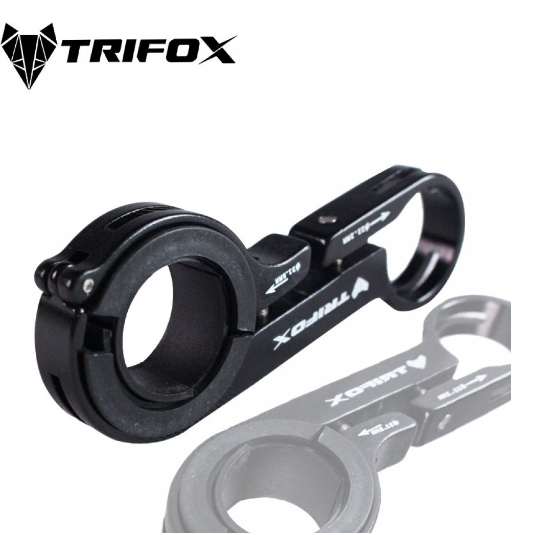
For avid cyclists and casual riders alike, comfort and functionality on long rides are paramount. A bicycle handlebar extender can significantly enhance your riding experience by providing extra space for mounting gadgets, improving control, and offering a more comfortable riding position. Here's how to make the most of this simple yet effective accessory. Why Use a Handlebar Extender? Handlebar extenders are perfect for when you need more room for lights, GPS devices, smartphones, or even a horn. They allow you to keep all your essential gear within easy reach, without cluttering your main handlebar space. Additionally, for those seeking a more upright riding posture, extenders can help alleviate back and neck strain by adjusting the height or angle of your handlebars. Choosing the Right Extender When selecting a handlebar extender, consider the material, length, and diameter. Aluminum extenders offer a great balance between strength and weight, while carbon fiber options provide the ultimate in lightweight durability. Ensure the extender is compatible with your bike's handlebar diameter and offers enough length to accommodate all your accessories. Installation Tips Installing a handlebar extender is a straightforward process that requires minimal tools: Positioning: Decide where you want to place the extender on your handlebars. It should be easily accessible but not interfere with your riding. Attachment: Loosen the screws on the clamp of the extender, wrap it around the handlebar, and then tighten the screws. Make sure it's secure but avoid over-tightening, which can damage the handlebar. Mounting Accessories: Once the extender is in place, start mounting your accessories. Distribute the weight evenly to maintain balance and ensure the bike handles well. Maximizing Comfort and Efficiency With everything installed, take a test ride to adjust the positions of the mounted items for optimal comfort and accessibility. You might find that slight adjustments can make a significant difference in your overall riding experience. Safety Considerations Always ensure that your handlebar extender and mounted accessories do not obstruct your view or interfere with operating the bike. Regularly check that the extender is securely fastened and that there's no movement while riding. In Conclusion A bicycle handlebar extender is a simple upgrade that can vastly improve your cycling experience. By freeing up handlebar space, enhancing control, and allowing for a more comfortable riding position, it's an accessory worth considering for any cyclist looking to make their journeys more enjoyable and efficient.
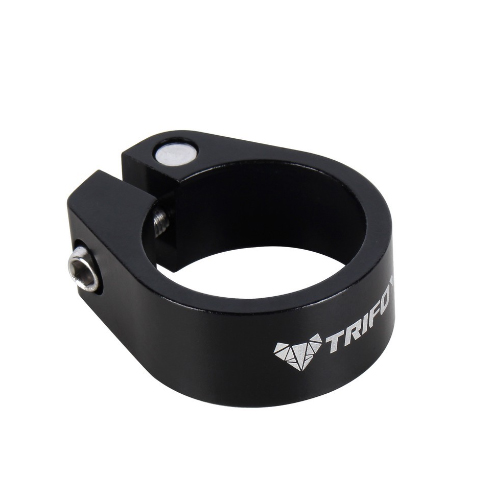
Selecting and installing the right seat post clamp is crucial for a secure and enjoyable ride. The seat post clamp keeps your seat post in place, allowing you to adjust the height of your saddle to fit your riding style and comfort. Size Matters: First, determine the correct size of your seat post clamp. This depends on the external diameter of your bike’s seat tube, not the seat post itself. Measure the seat tube with a caliper for accuracy or check your bike's specifications. Material: Seat post clamps come in various materials, including aluminum, steel, and carbon. Aluminum clamps are lightweight and sufficient for most riders, while steel offers added strength. Carbon clamps are best suited for carbon frames to prevent over-tightening and damage. Quick Release vs. Bolt-On: Quick-release clamps make it easy to adjust saddle height without tools, ideal for shared bikes or quick adjustments. Bolt-on clamps offer more security against theft and are preferred for mountain biking and road biking, where adjustments are infrequent. Installation: To install, lightly grease the inside of the seat tube (unless your bike has a carbon frame, in which case use carbon paste). Slide the clamp onto the seat tube, ensuring it's level. For bolt-on clamps, tighten the bolt until secure but without overtightening, which can damage the clamp or frame. Quick-release clamps should be tight enough that the lever requires firm pressure to close, ensuring the seat post won't slip. Final Check: After installation, check that the seat post does not move when you apply pressure. Adjust the tension if necessary. Regularly inspect the clamp for signs of wear or damage, especially after rough rides or impacts. In conclusion, the right seat post clamp not only secures your saddle but also contributes to your bike’s overall functionality and your safety. By considering size, material, type, and correctly installing your clamp, you ensure a smoother, safer ride.
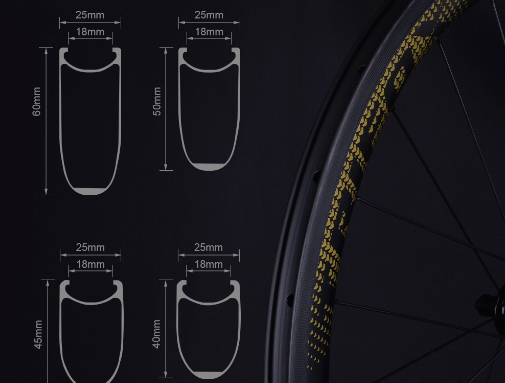
Finding a high-quality and affordable carbon wheelset for your road bike can transform your riding experience, offering a perfect blend of performance, durability, and style without breaking the bank. Carbon wheels are coveted for their stiffness, light weight, and aerodynamic advantages, but their high cost has often put them out of reach for many cyclists. However, brands like Trifox are changing the game, offering carbon wheelsets that don’t compromise on quality for cost. This guide will walk you through how to find a carbon wheelset that elevates your road biking without emptying your wallet. The Appeal of Carbon Wheelsets Carbon wheelsets are the go-to choice for serious cyclists and professionals alike due to several key benefits: Weight Reduction: Carbon is significantly lighter than aluminum, which can reduce the overall weight of the bike, making it easier to handle and quicker to accelerate. Increased Stiffness: A stiffer wheel offers better power transfer from the rider to the road, improving efficiency and speed. Aerodynamic Efficiency: Well-designed carbon wheels can reduce air resistance, allowing for faster speeds with less effort. Improved Ride Quality: Carbon can be engineered to offer vibration damping, which smooths out road vibrations, improving comfort on long rides. Finding High-Quality, Affordable Carbon Wheels 1. Research and Reviews Start your search by researching various brands and models. Look for reviews from both professionals and everyday riders to get a sense of performance, durability, and after-sales service. Trifox's range of carbon road bike wheels, for instance, receives high marks for quality and value, making them a great starting point. 2. Understand the Specifications Not all carbon wheels are created equal. Pay attention to the rim depth, as it affects aerodynamics and handling. Deeper rims (50mm and above) are more aerodynamic but can be harder to handle in windy conditions. Also, consider the rim width; wider rims can accommodate larger tires, which are becoming more popular for road bikes due to improved comfort and lower rolling resistance. 3. Hub Quality The hub is the heart of the wheel, and its quality can greatly affect performance and longevity. Look for wheels with reputable hub brands or those with positive reviews regarding smoothness and durability. Trifox wheels, for example, come equipped with durable and efficient hubs that promise long-term performance. 4. Weight Limit Check the manufacturer’s weight limit for the wheelset. Ensuring that the wheels can comfortably support your weight is crucial for safety and longevity. 5. Brake Compatibility Make sure the wheelset is compatible with your bike’s brake system. With the growing popularity of disc brakes, many carbon wheels are now designed specifically for disc brake systems, though there are still high-quality options available for traditional rim brakes. 6. Warranty and After-Sales Service A good warranty can give you peace of mind, especially when purchasing online. Look for brands that stand behind their products with a solid warranty and responsive customer service. Trifox, for example, offers excellent after-sales support, ensuring that any issues you might encounter are promptly addressed. Installation and Maintenance Tips Once you’ve selected your carbon wheelset, proper installation and regular maintenance are key to getting the most out of your investment: Professional Installation: If you’re not experienced in installing wheels, consider having them installed by a professional. This ensures that everything is set up correctly and safely. Regular Inspection: Regularly inspect your wheels for any signs of wear, such as cracks or de-lamination. Early detection of potential issues can prevent accidents and costly repairs. Clean Regularly: Keep your wheels clean from dirt and grime, which can degrade carbon over time. Use a soft cloth and mild soap, avoiding harsh chemicals. Conclusion Upgrading to a carbon wheelset doesn’t have to be prohibitively expensive. With careful research and consideration of the factors outlined above, you can find a high-quality and affordable carbon wheelset that fits your road biking needs. Trifox offers an impressive range of carbon road bike wheels that strike an excellent balance between quality, performance, and price, making them a fantastic option for cyclists looking to make the switch to carbon. Remember, the right wheelset not only improves your ride quality but can also boost your bike's aesthetics and overall value.
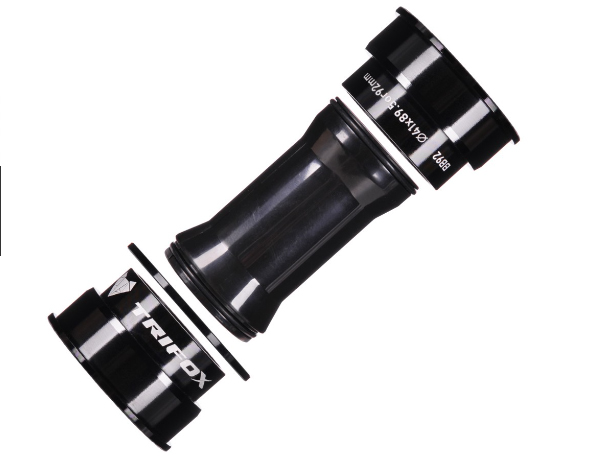
Choosing and installing the ideal road bike bottom bracket (BB) is a pivotal step towards achieving smooth, efficient cycling performance. The bottom bracket is the unsung hero of your bike's drivetrain, sitting stealthily in the frame's BB shell and ensuring your pedal strokes translate into motion with minimal resistance and maximum comfort. With technology evolving, options abound, making the selection process seem daunting. However, understanding the nuances can help you make an informed choice, ensuring your ride benefits from the optimal blend of durability, efficiency, and compatibility. Understanding Bottom Brackets Bottom brackets come in various types, each with specific characteristics suited to different bikes and riding styles. Compatibility with your bike frame and crankset is paramount, alongside considerations like weight, maintenance needs, and performance attributes. Trifox offers a diverse range of bottom brackets designed to meet the high demands of road cycling, blending innovative engineering with high-quality materials to enhance your riding experience. Types of Bottom Brackets Threaded Bottom Brackets: Classic and reliable, threaded BBs screw into the frame's BB shell, offering straightforward installation and maintenance. They're known for their durability and resistance to creaking, making them a favorite among traditionalists and those who value simplicity and longevity. Press-Fit Bottom Brackets: This type has gained popularity for its lighter weight and larger BB shell diameters, which can improve frame stiffness and power transfer. Press-fit BBs require precise installation, as improper fitting can lead to noise or decreased bearing life. BB Standards and Sizes: From BB30 to PF30, BSA, and more, the standard and size of the BB must match your frame's specifications. Trifox's selection caters to these varied standards, ensuring there's an option compatible with virtually any road bike. Choosing Your Bottom Bracket 1. Identify Your Frame's BB Standard: Start by determining the BB standard your frame supports. This information is usually provided by the manufacturer or can be found in your bike's technical specifications. 2. Consider Riding Conditions: Think about the environments where you ride. For rough, wet conditions, a BB with superior sealing might be best to keep out grit and moisture. In contrast, racing on smooth tarmac might prioritize weight savings and reduced friction. 3. Weigh Performance vs. Maintenance: Press-fit options might offer performance gains, but consider if you're willing to deal with potential maintenance issues. Threaded BBs might be slightly heavier but offer ease of maintenance and durability. 4. Quality and Material: Look for high-quality materials and construction. Bearings are the heart of the bottom bracket, so opting for a model with high-quality bearings, like those offered by Trifox, can significantly enhance your bike's performance and longevity. 5. Budget: Finally, factor in your budget. While it's worth investing in a high-quality BB due to its critical role in bike performance, there are options across various price points that offer a good balance of quality and value. Installing Your Bottom Bracket Installing a road bike bottom bracket can be straightforward if you have the right tools and a bit of know-how. Threaded BBs are generally simpler to install than press-fit variants, but both require precision. For Threaded Bottom Brackets: 1. Prepare the Frame: Clean the BB shell thoroughly, removing any dirt or old grease. 2. Apply Grease: Lightly grease the threads on both the BB and the frame. 3. Screw in the BB: Carefully screw in the bottom bracket by hand to avoid cross-threading. Once hand-tight, use the appropriate BB tool to tighten it to the manufacturer's specified torque. For Press-Fit Bottom Brackets: 1. Prepare the Shell: Ensure the BB shell is clean and free of burrs. Some mechanics recommend a light application of retaining compound or grease (depending on the frame material and manufacturer's recommendation). 2. Press in the Cups: Using a BB press tool, align the cups with the BB shell and press them in evenly, ensuring they are straight and fully seated. Regardless of the type, always refer to the bottom bracket and frame manufacturer's guidelines for specific installation instructions, torque settings, and maintenance advice. Conclusion Selecting and installing the ideal road bike bottom bracket is essential for a smooth, efficient cycling experience. By understanding the different types and considerations involved in choosing a BB, you can ensure your bike is equipped to deliver top performance on the road. Trifox's range of high-quality bottom brackets offers cyclists a variety of options tailored to different needs and preferences, enabling a custom fit for your ride. Proper installation is key to maximizing the benefits of your chosen BB, so take the time to do it right or consult a professional mechanic to ensure optimal performance and longevity of your cycling investment. With the right bottom bracket, your road bike will provide countless miles of smooth, efficient, and enjoyable rides.
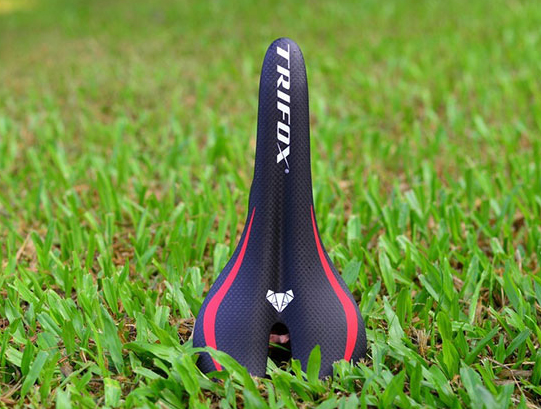
Riding comfort is a crucial aspect of cycling, whether you're a daily commuter, a weekend warrior, or a competitive cyclist. The right bicycle seat cushion can significantly enhance your riding experience, allowing you to cover longer distances more comfortably and enjoyably. One standout option for those seeking to upgrade their ride is the Carbon Bike Saddle CS100, which promises enhanced riding comfort among other benefits. The Importance of Riding Comfort Comfort on the bike is about more than just enjoying your rides. It's also about preventing injuries, reducing fatigue, and improving performance. A seat cushion that doesn't suit your body can lead to discomfort, pain, and even long-term health issues. Therefore, selecting the right bicycle seat cushion is a decision that should not be taken lightly. Introducing the Carbon Bike Saddle CS100 The Carbon Bike Saddle CS100 offers a combination of high-quality materials, design excellence, and comfort-enhancing features. It's designed to cater to the needs of diverse riders, providing a comfortable platform that supports longer and more enjoyable rides. Enhanced Riding Comfort At the heart of the CS100's appeal is its promise of enhanced riding comfort. This is achieved through a meticulously designed ergonomic shape that supports the sit bones while minimizing pressure on soft tissues. The use of carbon in the saddle's construction also plays a crucial role. Carbon is known for its ability to dampen vibrations, offering a smoother ride over rough surfaces. Top Quality Items for Less Investing in a high-quality saddle like the CS100 doesn't have to break the bank. It represents excellent value for money, ensuring that riders can access top-notch comfort and performance features without a hefty price tag. This accessibility means that more cyclists can experience the benefits of a premium seat cushion, enhancing the overall quality of their rides. 24/7 Live Chat Support Selecting the right saddle can be daunting, but the availability of 24/7 live chat support with the CS100 ensures that riders can make informed decisions. Whether you have questions about compatibility, installation, or simply want advice on the best option for your riding style, expert assistance is always at hand. Fast & Reliable Delivery Options Once you've decided on the CS100, fast and reliable delivery options mean you won't have to wait long to enjoy your upgraded ride. This convenience minimizes downtime and gets you back on the road or trail with minimal delay. Multiple Safe Payment Methods With various safe payment methods available, purchasing the CS100 is straightforward and secure. This range of options ensures that the buying process is hassle-free, letting you focus on the excitement of enhancing your riding experience. Selecting the Right Seat Cushion While the Carbon Bike Saddle CS100 offers numerous benefits, ensuring it's the right fit for you is essential. Here are some factors to consider when choosing any bicycle seat cushion: Body Geometry: Consider your sit bone width and the type of riding you do. A properly sized saddle will support your sit bones without causing pressure on soft tissues. Material: Materials like carbon fiber offer a good balance of stiffness (for efficient power transfer) and vibration damping (for comfort).Shape and Cutouts: Some riders prefer saddles with a central cutout to reduce pressure and enhance breathability. Others may find a solid saddle more comfortable. It's about personal preference and finding what works best for you. Compatibility: Ensure the saddle fits your bike's seat post and aligns with your desired riding position. Some saddles are designed with a particular posture in mind, from upright to aggressive racing stances. Conclusion Enhancing your riding comfort with the right bicycle seat cushion is a game-changer for any cyclist. The Carbon Bike Saddle CS100 stands out as an excellent choice, offering a blend of quality, comfort, and value that can elevate your cycling experience. By considering your unique needs and the features that contribute to saddle comfort, you can make an informed choice that ensures every ride is a pleasure. Remember, the right saddle is out there for everyone; it's just a matter of finding it.

















